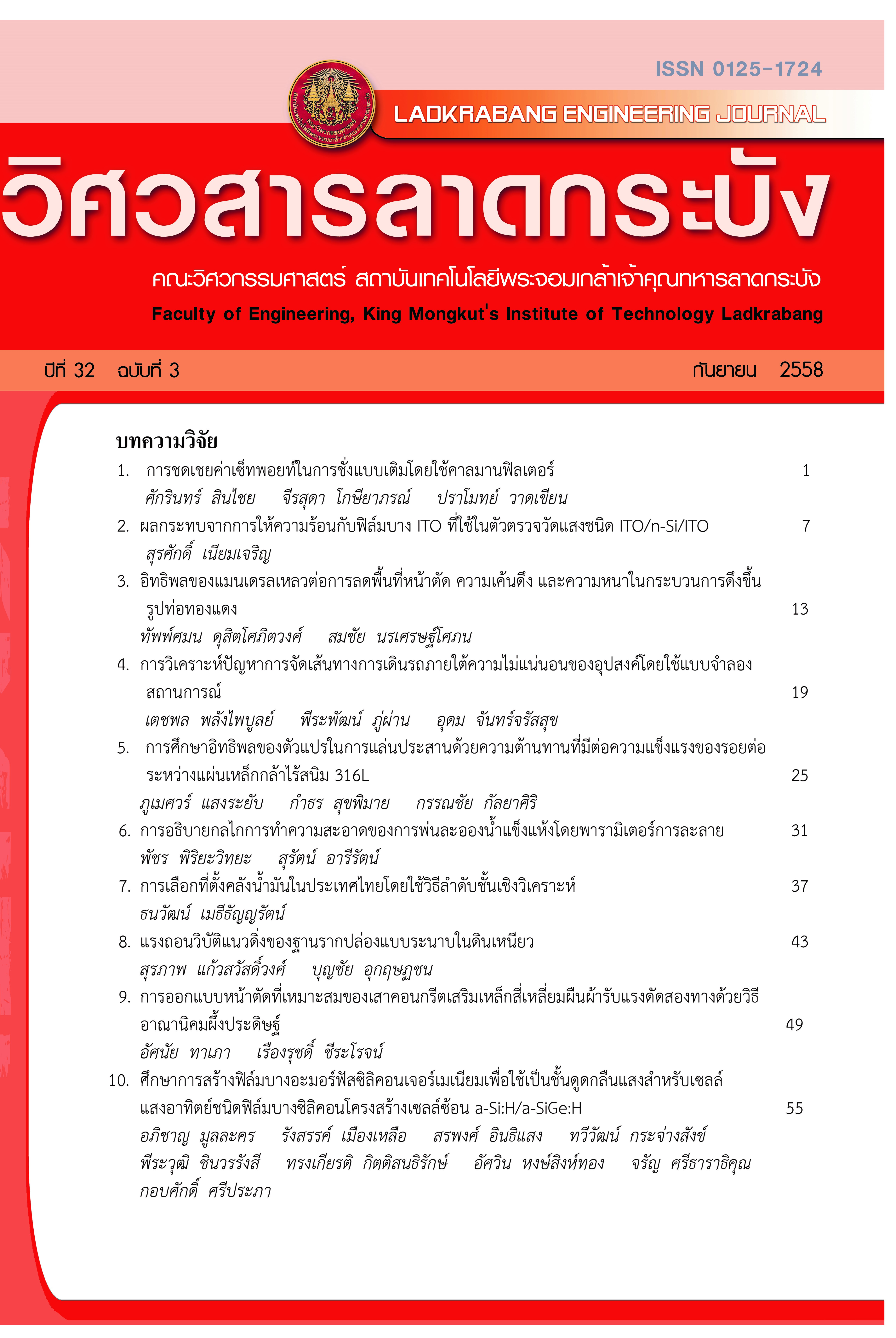Set-Point Recompense in Filling Weigher using Kalman Filter
Keywords:
Excess of weight,, Kalman filter,, Set-point compensationAbstract
In control system, one variable which is significant to a system is a set-point because it defines the system to initialize or to end its operation. Assigning the set-point can be set in two ways as follows, 1) the set-point is set identical to the desired value and 2) the set-point is compensated to satisfy the target value. In this work, the latter case is employed to lessen errors in a filling weighing system. Due to, in such system, a sensor is placed beneath a weighing container whilst a substance is filled from the top. By the time that the sensor senses the desired quantity, there is some quantity which has not been measured still left in the air. Hence, the excess of weight is occurred. In reality, the surplus is not constant owing to some noises interfere. To surmount this problem, Kalman filtering is introduced to compensate the weight set-point to meet the exact excess consistently. To illustrate its performance, the proposed technique is experimented with a practical machine at the target weight of 3505 grams. The results have revealed that the proposed approach is well performed which provides the measured weight error as low as 0.08%.
References
[2] Unipulse Corporation. F701-C Weighing Controller Operation Manual. Tokyo., pp. 82-83, 2012.
[3] Z. Dejun, W. Haochen, and L. Chunmei, “The application of fuzzy control in high accurate automatic powder dosing system,” Electric Inf. and Control Eng. (ICEICE), pp. 1771-1774, 2011.
[4] S. Sinchai, S. Saechia, T. Limpiti, J. Koseeyaporn and P. Wardkein, “Estimating an Optimal Setpoint to Lessen Errors in Filling Weighing System Based on Kalman Filtering,” IEEE Int’l. Conf. on Acoustics, Speech and Signal Processing (ICASSP), pp. 2189-2193, 2014.
[5] S.M. Kay, Fundamentals of Statistical Signal Processing, Vol. I: Estimation Theory. New Jersey: Prentice Hall, pp. 419-478, 1993.
[6] M.H. Hayes, Statistical Digital Signal Processing and Modeling. New Jersey: John Wiley & Sons, Inc, pp. 335-390, 1996.
Downloads
Published
How to Cite
Issue
Section
License
The published articles are copyrighted by the School of Engineering, King Mongkut's Institute of Technology Ladkrabang.
The statements contained in each article in this academic journal are the personal opinions of each author and are not related to King Mongkut's Institute of Technology Ladkrabang and other faculty members in the institute.
Responsibility for all elements of each article belongs to each author; If there are any mistakes, each author is solely responsible for his own articles.






